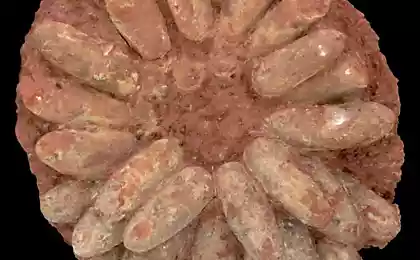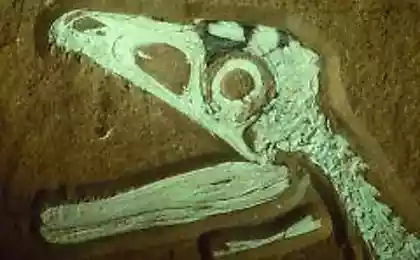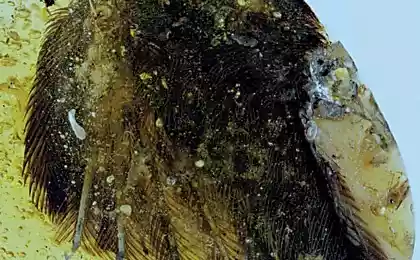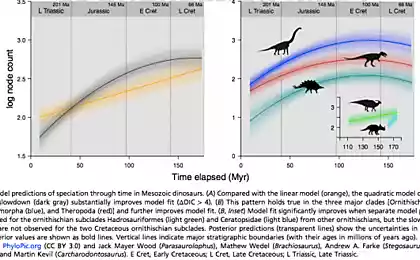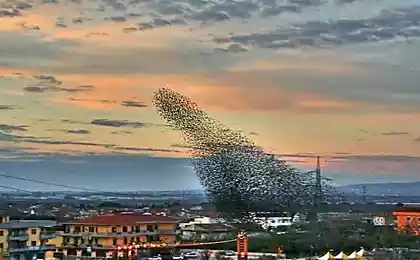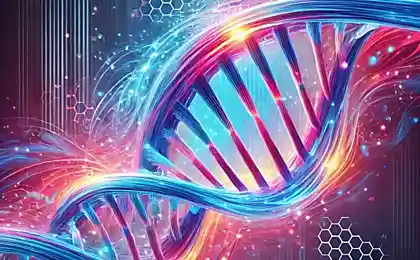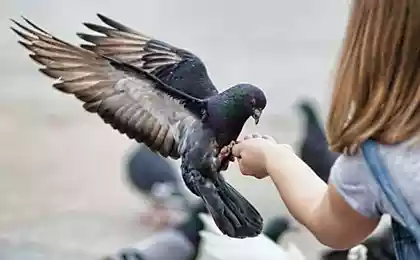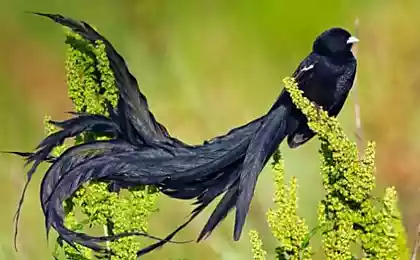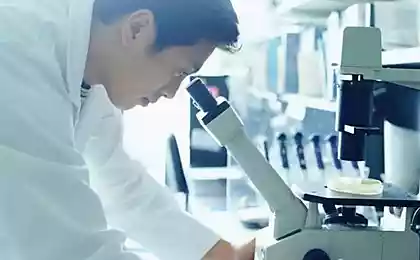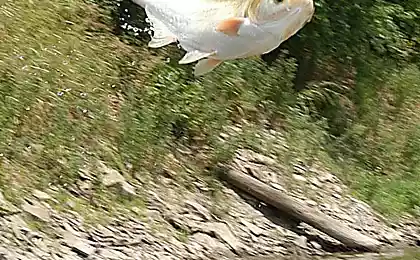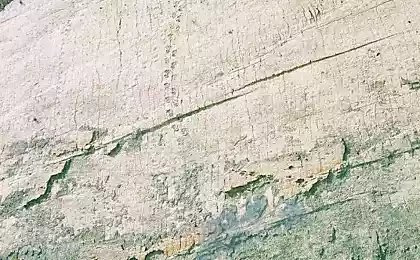Comparative physiology of dinosaurs and birds. Popularly about obscure. Part 1, "The bones of the Titans"
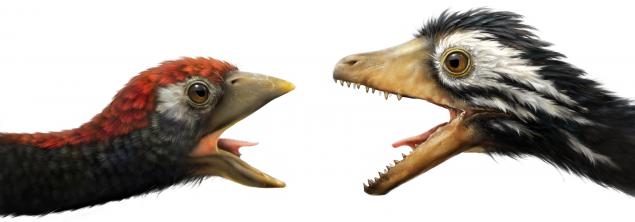
In one of my previous reviews , you are familiar with the chronology of the major geological and cosmic catastrophes in the history of our planet. The last of the 5 biggest "Apocalypse", presumably put an end to more than 150 million years of the "kings" of fauna of the Mesozoic era - dinosaurs. But "terrible lizards" still left a paleontological "traces" that allow us to get acquainted with the hard life of the reptile.
In several parts of this volume review, I try to explain to you the little-known details about the physiology and life of the ancient giant (and not) the "terrible" reptiles. The following outline will be described comparative characteristics of the skeleton, dinosaur intelligence and genetics with those of their modern descendants - birds, crocodiles and their relatives.
«Dissimilar relatives»
In general, recorded a huge difference in the structure of the skeleton of modern birds and dinosaurs, this is due to 160 million years of adaptation to a particular group maniraptorov active flight, caused a radical "restructuring" of the skeleton and the physiology of birds. Something similar is observed in mammals compared hoofed animals and their marine relatives (cetaceans).
This finding significant differences in morphology related animals during their adaptation to different ecological niches in science is called divergence.
Who to whom a relative? Systematics of carnivorous dinosaurs and birds Maniraptory are a large group of dinosaurs, including both modern birds and their close relatives - deinonychosaurs (small predators with a "terrible claw"). Sami deinonychosaurs divided into troodontids (under the name of a certain kind - Troodon, who lived at the end of the era of the dinosaurs), and dromaeosaurus (eg. Bambiraptor and Deinonychus). In turn maniraptory, with tiranozavridami and ornitomimozavrami ("imitators of birds"), entered into an even larger group tirannoraptorov. Recently, along with komsognatami (small carnivorous theropods) formed the largest group of theropods - tsellurozavrov.
The most learned members of the family deinonychosaurs, feather cover is expected in the wake of "fountain" of cells surviving on krylopodobnyh hands velociraptor and deynoniha i>
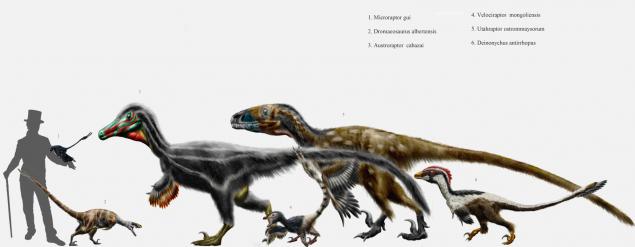
However tsellurozavry not cover all known theropod predators. In the Jurassic (and earliest Cretaceous) period dominated largely carnosaurs who went (genetically) from tsellurozavrami approx. 170 million years ago, which included a giant infraorder tetanurae. The most significant carnosaurs note karharadontozavra, giganotozavrva and allozavrid. Spinosaurus, the largest predatory theropod dinosaur era, is also part of a group titanurov, but as a representative of a separate unit from the tsellurozavrov spinosaurids.
The relative sizes of the largest carnivorous theropod i>

Also tetanurae known predators and other groups. One of the main "villains" video games "Turk" - Carnotaurus applied to infraorder tseratozavrid relatively primitive small carnivorous dinosaurs.
blockquote> the antonym of divergence is the convergence - the process of gaining similar morphological features of the different groups of animals, in their adaptation to similar conditions of life. An illustrative example of the convergence of the example (left to right) afanerammy amphibian, reptile and mammal crocodile ambulotseta (ancestor of cetaceans) i>

In general, the morphology of the dinosaurs was our cross between archaic features of reptiles (bone structure, genetics and metabolism) and progressive features of birds and mammals (bipedalism, feather cover, the structure of the jaw apparatus herbivorous dinosaurs). The dominance of one or another (progressive or archaic) features probably varied greatly among different groups and even families of dinosaurs.
All dinosaurs are divided into two main groups - Saurischia and ornithischian:
• In two-legged Saurischia dinosaurs - theropods (diagram below) the center of gravity was located on the line of the pelvis, heavy tail balanced the animal's massive head. Pubic (red) and ischial (green) pelvic bones are perpendicular to the spine along the animal's hindquarters. Blue isolated iliac bone, which are attached thigh muscles (including a human).
Tyrannosaurus Rex, a typical Saurischia predatory theropods, the group of related birds tsellurozavrov i>
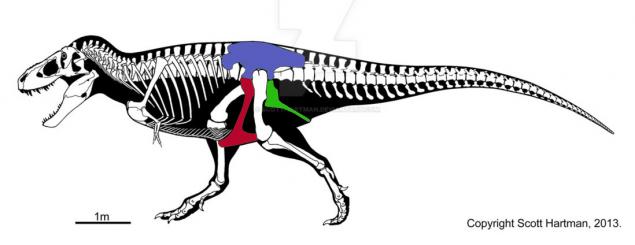
• The hip joint is the main part of the "four-legged" herbivorous dinosaurs was significantly different from that of the theropods. In particular, the pubic and ischial bone were located behind the pelvis parallel to each other animals (similar to the birds, the so-called "Ornithischia dinosaurs"). However, this division into "two-legged" and "pets" is very conditional, because the four-legged sauropods were similar to the hip joint theropods, the dinosaurs and many Ornithischia actively practiced in the movement of the hind legs.
ornithischian dinosaur family hadrosaurs ("duckbilled" dinosaurs) i>

kind of sauropod Brachiosaurus, it may be noted that it belongs to Saurischia dinosaurs, despite the movement of four limbs i>
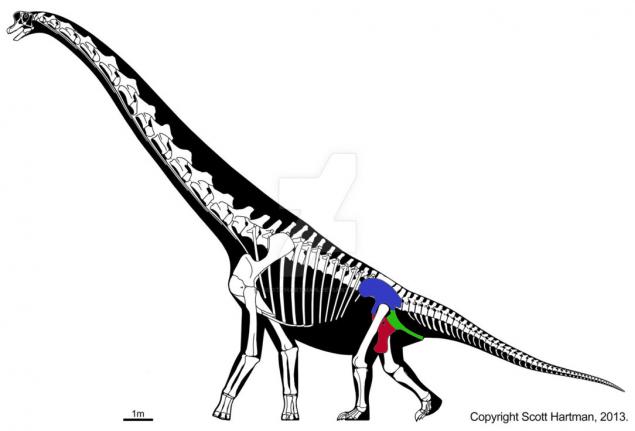
The hip joint birds are much less mobile, pubic and ischial bones sent back and fused with each other, and often, with the back of the pelvic and caudal vertebrae form the sacrum complex. The tail is strongly reduced in birds pygostyle (who had, and some oviraptozavrov ), the spine is inactive. Ribs birds have hooked spines allow thoracic animal not to move during the flight. At the ends of the ribs most birds attached sternum and keel, which in turn are attached muscles strong flight feathers of the wings. The ribs and vertebrae of dinosaurs were more mobile than birds, the keel, they just did not have (but do not have it and not that of modern flying birds such as ostriches).
We should also mention the different structure of the cervical vertebrae of birds and dinosaurs. At last they amfitselnye (biconcave) or protselnye / opisthocoelous (concave on one side and convex on the other hand, like most reptiles). Cervical vertebrae in birds geterotselnye - saddle-shaped, convex-concave on both sides, which gives them greater mobility of the cervical, inaccessible to any known type of dinosaurs and mammals.
skeleton современной bird (dove)
1 - skull 2 - the cervical vertebrae, 3 - fork 4 - coracoid process, 5 - hooked spines ribs 6 - keel, 7 - patella, 8 - bobbin 9 - fingers 10 - tibia (tibiotarsus) 11 - fibula (tibiotarsus) 12 - hip 13 - ischium 14 - pubic bone, 15 - the ilium 16 - caudal vertebrae 17 - pygostyle 18 - complex sacrum, 19 - blade 20 - lumbar vertebrae, 21 - humerus, 22 - the ulna, 23 - the radius, 24 - wrist 25 - Brush, 26 - fingers 27 - wing i>
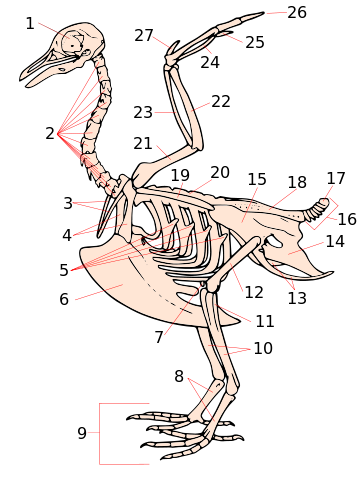
Thighs birds do not fly, are inactive and in the direction away from each other. Land birds are moved primarily by moving tibiotarzusa (shin birds adherent fibula) and the tarsus (fused metatarsal bone). Ie tibiotarzus birds, mechanically performs the role of the femur in mammals and dinosaurs. Limbs dinosaurs, on the contrary, are parallel to each other and for the body of animals, as opposed to the rest of reptiles and similar modern mammals. Obviously dinosaurs were reptiles in the literal sense of the word. Shin dinosaurs, like shin mammals, consists of two leg bones, many (especially small dinosaurs) did not have a bobbin, and similarly the man had not fused metatarsal bone.
From left to right, the comparison of hindlimb theropod semeysta tiranozavrid (type Rex), wolf mammals (fox) and land birds (ostriches). 1 thigh bone, 2 - the shin bone (large and small tibia / tibiarzus birds), 3 - metatarsal bones, fused at the birds in the tarsus (excluding penguins) and certain dinosaurs - theropods. Green represents the bone is actively involved in the movement of the animal. Roughly speaking, the role of the tribe of modern birds perform ankle i>
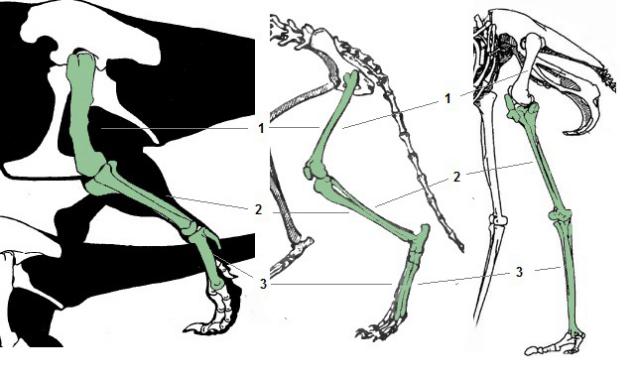
Simulation running dinosaurs (and gallimimusa tyrannosaur) from Jurassic Park, in comparison to the modern ostrich run (bottom) i>
Hip sedentary birds enable them to actively move through the ground without the risk by the collapse of air sacs, birds needed for the active breathing (in flight, and birds do not run the lungs expand as the mammals, the air through them "pumped" the same air bags). Some paleontologists take this as indirect evidence of the great bird of the respiratory system in theropods.
Finding aerosteona , predatory theropod group carnosaurs that lived 80 million years ago, partly refutes the findings above. "Air bone" dinosaur presumably bear traces of air bags. Initially, these bags can be used for thermoregulation of dinosaurs, and only then, with the improvement of metabolism started to be used for intensive gas exchange i>
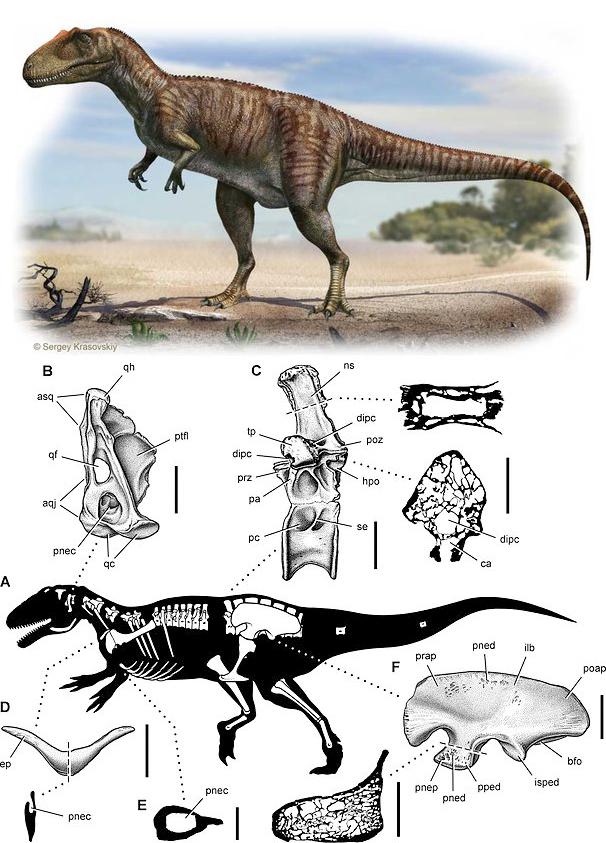
Even more differences between the two groups of animals appear in a comparative analysis of their skulls. Skull bird is attached to the bottom cervical vertebrae, the cervical vertebrae of dinosaurs is fastened behind the skull. Bird Skull has a spherical shape and has two diapsidnye arc, the top of which is strongly reducing. Dinosaur skull is spherical and has a less developed diapsidnymi two arcs (most often the temporal holes). Jaws dinosaurs are more complicated, and like mammalian teeth filled. Modern birds have no teeth, and instead a complex jaw apparatus have a relatively simple, light but strong beak.
Reservation. The latter comparison is not entirely correct, as scientists known as "toothless" dinosaurs (Oviraptor) and "toothy" bird (enansiornisovye birds dominated in the Cretaceous period, had dinosauriformes jaw apparatus.) I>
A graphical representation of the evolution of the progressive features of dinosaurs from the "terrible lizards" and to "the terrible birds» ( Time scales and the order in which the animals are not met )
Tyrannosaurus Rex, who lived 70-65 million years ago, is a very typical (if not standard) theropod. Because of the typical features of a dinosaur catches the eye two powerful hind limbs, Saurischia hip joint, and a massive tail that serves as a balancer for a large and ponderous animal's head. The skull is attached to the cervical vertebrae back, powerful jaws are covered with teeth, before the orbital opening (to facilitate the skull) and orbital diapsidnye holes where jaw muscles were attached animal (temporal analog of human depression). Against the background of a close relative of birds - dromaeosaurus, highlighted the lack of fork (finger-jointed bones clavicle) and strongly reduced the relative size of the forelimbs i>

Deinonychus, who lived 40 million years before Tyrannosaurus rex, had just like birds features of its skeleton (during the life of the animal was the size of a wolf) that has served for paleontologists (especially for the famous John Ostrom), one of the first convincing evidence of origin birds from dinosaurs. In particular brush his forelegs strongly resemble hand-pervoptitsy wings of Archaeopteryx and modern birds brush remotely. Being "the broken" brush presumably evolved on the sides of the animal and likely had feathers (as in bird-like ancestors deynoniha). On the edges are hooks as birds. Light animal bones and hard-coated tail tendons (improving agility when cornering), pointed to its high speed, and the first time paleontologists have brought the idea of warm-blooded dinosaurs. Like all dromaeosaurus, Deinonychus had a "fork" in the front of the chest, which is used to modern birds "shock" at the strong beating of wings i>
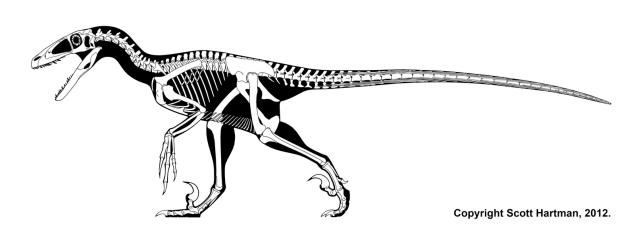
Archaeopteryx, lived 150 million years ago, the first to show a direct link between birds and reptiles, and he is considered one of the first birds, the whole strongly resembles reduced to the size of a pigeon deynoniha. It differs from the last large relative size of the brain, reducing the size of the jaws and reduction diapsidnogo holes. Archaeopteryx was the ancestor of birds, but it is his closest relative, had developed feathers but could not fly, planning from tree to tree i>
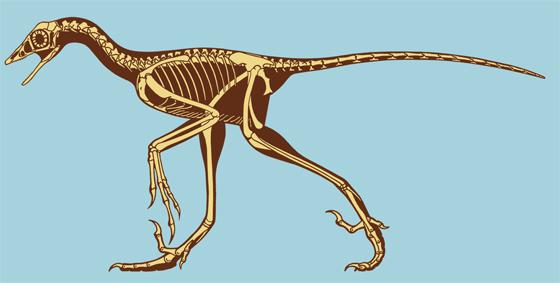
Microraptor, a dinosaur from the group dromaeosaurus sized Archaeopteryx, as is very much like its older relative, making them almost indistinguishable to the skeletons are not professionals. The animal lived 125 million. Years ago and lifestyle reminiscent of Archaeopteryx, which has developed a pen cover black. Hunting for insects and early birds, which is almost entirely swallowed. As above mentioned dromaeosaurus Deinonychus, pubic and ischial bone of the animal tend to "bending" back i>
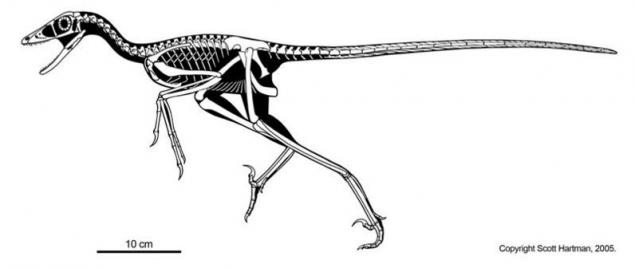
Contemporary Microraptor, and his "neighbor" in the region (north eastern China, southern Mongolia), konfutsiornis was already halfway between dinosaurs and birds. His jaw had been deprived of teeth, the shoulder joint has been well developed, and instead of a long-tailed bird already had pygostyle - attaching the tail, improves maneuverability in flight. Like Microraptor, on the edges of the birds were hooks firmly fixed abdominal cavity during the flight. Place joints of the cervical vertebrae and the skull is halfway between its dinosaurs and modern birds. However, the structure of the shoulder joint is not allowed to fully master the flight of a bird, exactly as underdeveloped keel. The hip joint is still very much resembled that of dromaeosaurus i>
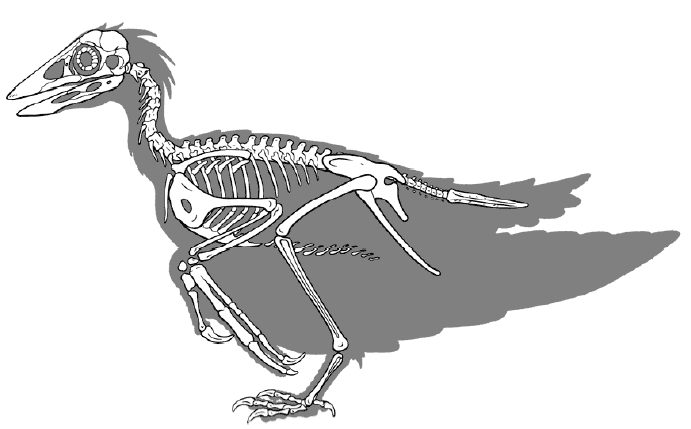
Sinornisy were among the first birds mastered full flight. Despite their flight mechanics is much different from that of modern birds, like other enansiornisovyh birds ("protivoptits"). There was a keel pygostyle, and the fingers of the forelimbs were partially fused with each other. Jaw apparatus and the hip joint was more similar to that of dinosaurs than today (veerohvostnyh) birds. Practical sinornisa complete skeleton was found in the belly of Microraptor fossil, which they hunted and
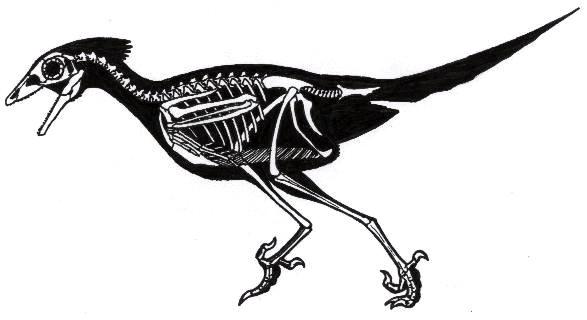
Microraptor, attacking a group sinornisov i>

However, ancient feathered, mastered a full flight were the ancestors of modern birds we veerohvostyh ( Archaeornithura meemannae ), « cousins "of the treasure Ornitotorasov enantiornitov - euornity. Recently separated from enantiornisov presumably at the end of the Jurassic period 140-145 million. Years ago. Even then, the trend began to emerge specialization euornitov to hunt in shallow water and on shorelines. Late Cretaceous ihtiornisoobraznye were similar to gulls and terns lifestyle and physiologically is not much different from modern birds (see image below), except for the presence of teeth in both jaws. Because of the huge variety of planning and flying dinosaurs, the Cretaceous-Paleogene extinction survived only a small part euornitov, the ancestors of modern birds (neornitov).

«Terrible birds»
After the Cretaceous-Paleogene extinction of birds, along with mammals began to fill ecological niches left by their fellow dinosaurs. So, after 15 million years, there were the first giant land birds - not flying gruiformes. Size (up to 2, 5 m in height and weighs up to 300 kg) and the way of life they are little different from their relatives dromaeosaurus, as well as in the main predatory animals. Adaptation tailless bird to onshore lifestyle is reflected in the shift of the center of gravity in the center of the body of the animal. Simplified "work" nature and lightweight skull bird instead of complex jaws armed with light but strong beak. As a result, modern land birds represent a more streamlined version of the dinosaurs, the theropods, without the cost of weight on the powerful muscles of the tail and neck. Giant gruiformes prevailed in America last 50 million years, losing in the struggle for the survival of carnivores (wolf and cat), about 400 000 years ago. Below is a diagram of the skeleton of the largest group gruiformes fororakosovyh - kelenken.

The moment the hunting of another representative of the group fororrakosovyh, after whom she names - phorusrhacos.
i>
Ляонин, Кладистика





















